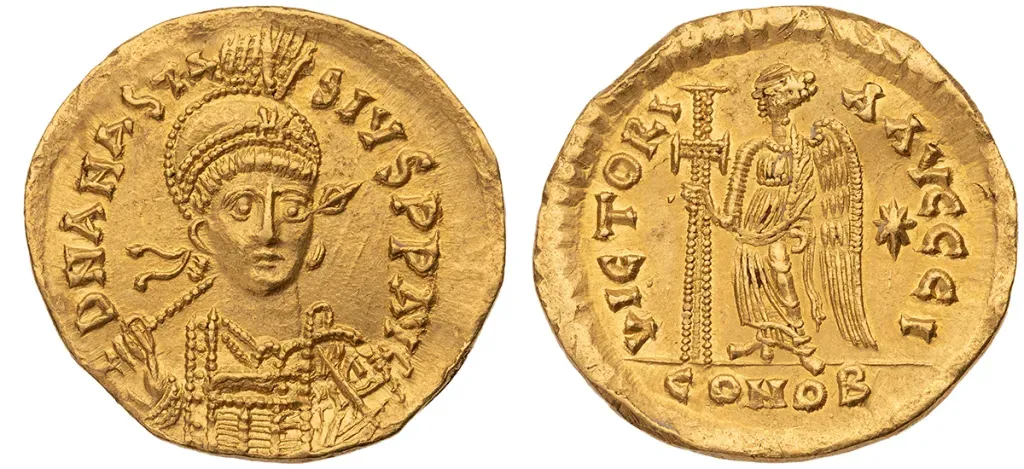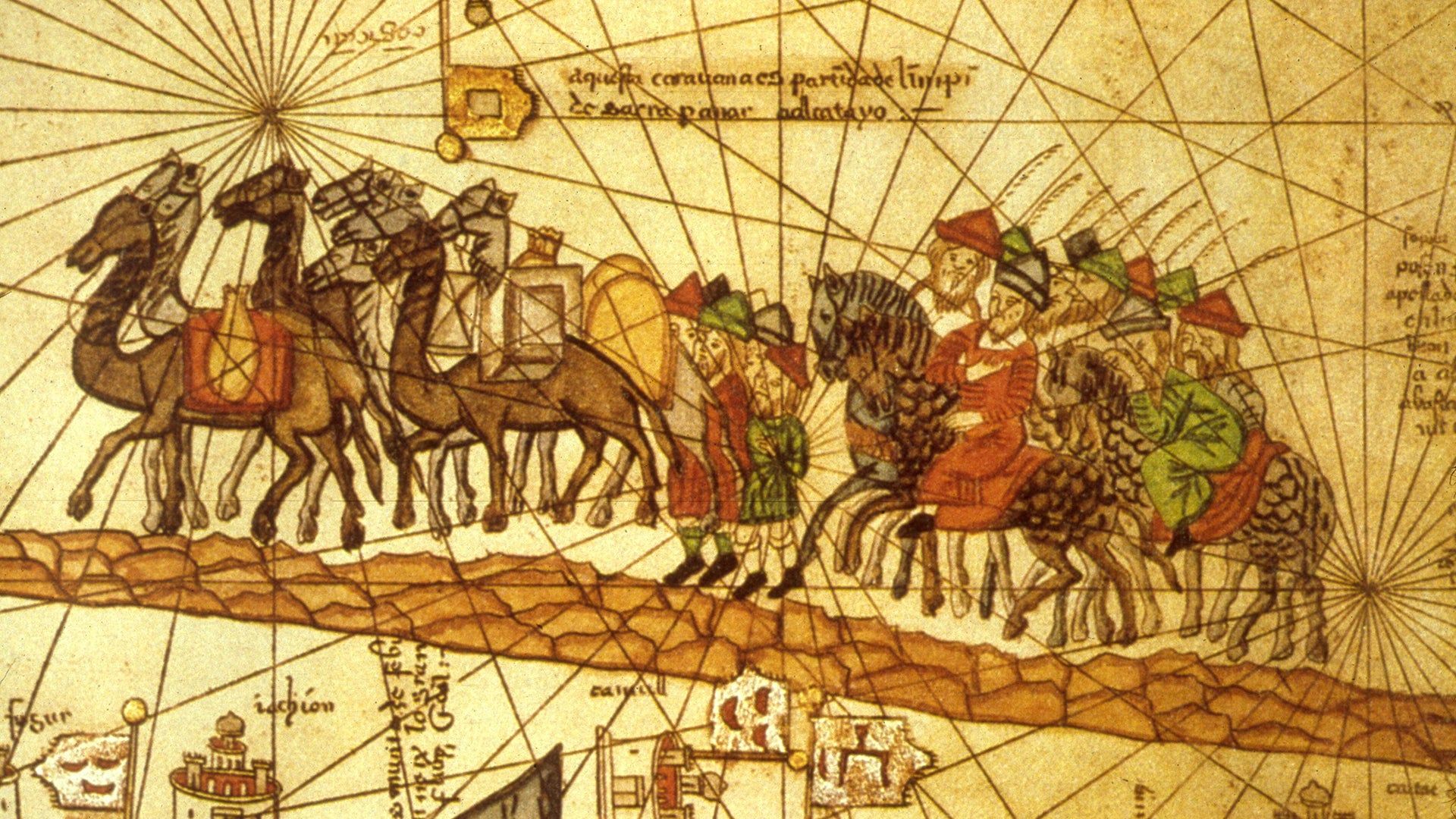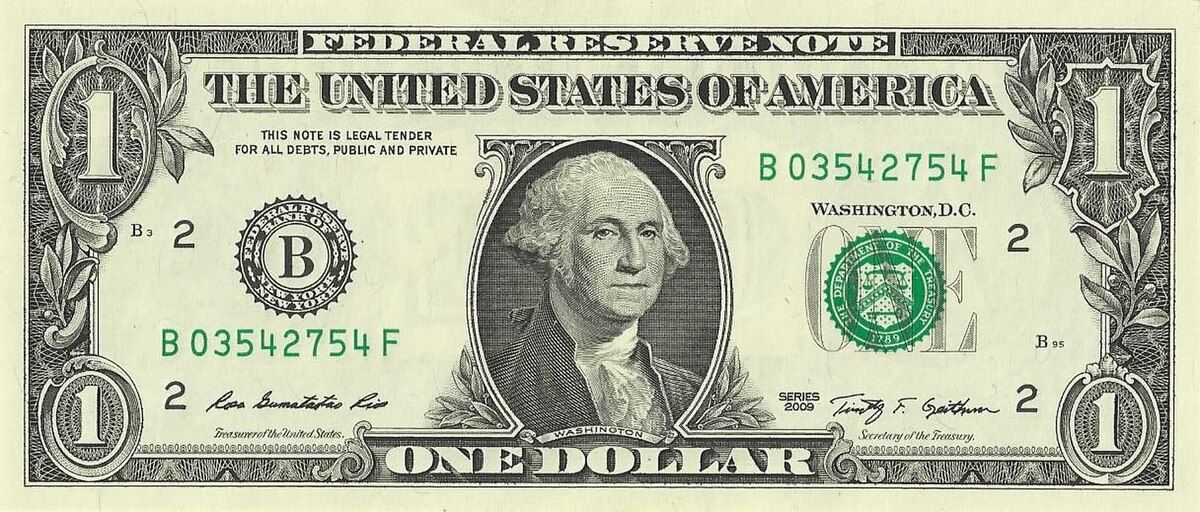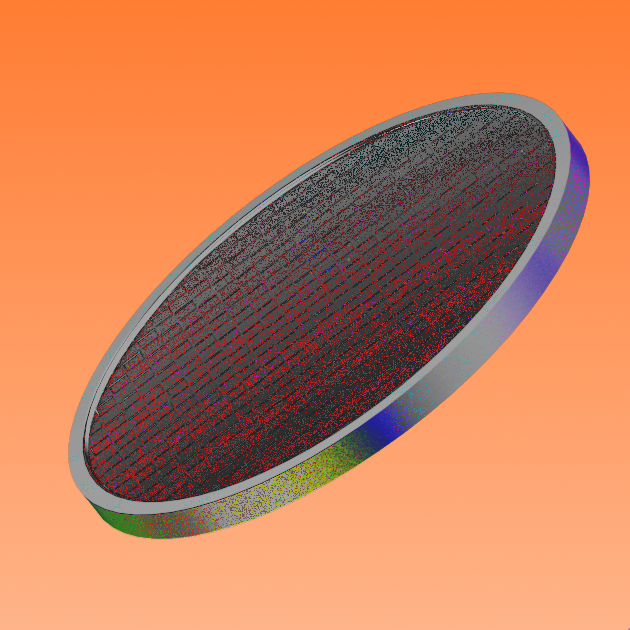Fiat Money vs Commodity Money | What's the difference?
Discover the key differences between fiat and commodity money, their advantages, limitations, and how they are used in global economies.
By Corey Barchat

Money is more than just a medium of exchange.
It is a foundation of historical and modern societies, influencing everything from government policy to individual behavior. Yet despite its everyday use, it can be difficult to grasp the fundamental differences between types of money.
Two of the most common forms that have shaped economies throughout history are fiat money and commodity money. Each possesses its own strengths, limitations, and key roles in the evolution of global trade and commerce.
But which one has greater value in today's economy?
This article examines the characteristics of both fiat and commodity money, their differences, historical significance, and their implications for the future of money.
What is Commodity Money?
Commodity money is a type of currency based on the value of a physical good or resource. Unlike modern currency systems, where value is influenced by governments and central banks, commodity money derives its worth from the intrinsic value and scarcity of the material from which it is made.
For instance, gold and silver are valuable commodities due to their desirability, scarcity, and functionality. Even if these materials were no longer used as money, they would still hold value due to their industrial, decorative, and technological applications.
In contrast, modern fiat currencies derive their value from government decree, and in most countries, there is little to impede the production of an unlimited supply. Commodity money, on the other hand, provides a natural limit on inflation, as it could only be expanded through the mining or acquisition of more of the physical commodity.
Early use of commodities as currency
The use of precious metals like gold and silver can be traced back to ancient Mesopotamia and Egypt, where they were traded in standardized weights. Early coins made of these metals were created by various ancient civilizations, including the Greeks, Romans, and Chinese, to facilitate trade. These coins had intrinsic value because they were made from materials that were universally recognized as valuable.

Salt, used in ancient African trade routes and by the Romans, was another early form of commodity money. It was so valuable that the word "salary" is often attributed to the Latin word salarium, or soldiers' wages used to purchase salt and other important goods.
Shaping trade and commerce
Commodity money played a crucial role in early trade and commerce, since its inherent value made it reliable in transactions across different cultures and regions. Unlike barter systems, where the value of goods could be subjective and fluctuate, commodity money created a more standardized form of exchange.

This was essential for developing international trade routes, such as the Silk Road (not to be confused with the online black market), where merchants traded goods like silk, spices, and precious metals over vast distances. It also allowed for the accumulation and storage of wealth, as metals like gold were durable and could be hoarded.
Historical examples of commodity money
Throughout history, various materials have served as commodity money, depending on the culture, resources, and geographical context. Some of the most well-known examples include:
- Gold: Arguably the most famous form of commodity money, gold has been used for thousands of years across various civilizations as a store of value and medium of exchange. Its scarcity, durability, and divisibility have made it an ideal form of currency.
- Silver: Similar to gold, silver has been widely used as currency, especially in smaller denominations. Compared to gold, its availability made it more practical for daily trade.
- Salt: Dating back to ancient civilizations, especially in Africa and the Roman empire, salt was highly valuable as a preservative and essential nutrient, making it an important medium of exchange.
- Copper: Copper usage dates back up to 10,000 years, and has often used for smaller coins—especially in the Roman Empire—due to its lower value compared to gold and silver.
- Grain: In some societies, commodities like grain or barley served as money, particularly in regions like ancient Mesopotamia where agriculture was a cornerstone of the economy.
What is Fiat Money?
Fiat money, by contrast, is a currency whose worth is derived purely from the trust and authority of the government or institution that issues it. Unlike commodity money, fiat currency is not represented by a physical commodity. Instead, its value is established through frameworks that dictate its use for things like transactions, taxes, and debt repayment.

Fiat currencies, such as the U.S. dollar, the Euro, and the Japanese yen, are some examples of dominant fiat money in today’s global economy. Their value is backed by the stability of the issuing government and the trust that individuals and institutions place in the currency.
Fiat Money and Commodity Money: Key differences
While both fiat and commodity money serve as mediums of exchange, they differ fundamentally in how their value is derived, controlled, and perceived.
Stability and trust
Fiat money: Public trust in government
The status of fiat as a stable currency hinges on faith in the government and its financial institutions. If the country is stable, people are more likely to have confidence in the government-issued currency. However, in cases of political turmoil or economic mismanagement, public trust in the monetary system can erode, leading to a loss of value for the currency.
Commodity money: Stability and value of the commodity
Commodity money is relatively more stable because its value is tied to a physical resource that is desirable in and of itself. For instance, even if a government declines (or even collapses), gold or silver will still hold value in the future since its intrinsic worth is less vulnerable to political and economic instability.
"Gold is often considered superior to fiat as a store of value because people see it to be inflation-resistant. Its supply has grown at a remarkably steady rate over time, which can't be said of government-issued currency."
— Geoffrey Lyons, web3 writer
Supply and control
Fiat money: Governments and central banks
Fiat money is controlled and regulated by governments and central banks, which have the authority to print money, manage inflation, and implement monetary policy. The supply of fiat money can be expanded or reduced at will to respond to economic conditions, such as during a financial crisis.
Commodity money: Natural availability
Commodity money, on the other hand, has a supply that is naturally limited by the scarcity of the underlying commodity. This makes it more difficult for governments to manipulate the money supply, as it can only be created by mining more of the commodity, such as gold or silver. The tradeoff here is that commodities can lead to a more stable but less flexible and liquid monetary system.
Inflation and deflation
Fiat money: Inflation risks
One of the primary risks of fiat currency is inflation, especially if the government prints too much currency. Over-issuance can lead to a decrease in the value of money, as more units are in circulation chasing the same amount of goods and services. This can lead to hyperinflation, as seen in historical cases like Zimbabwe and the Weimar Republic in Germany.
Commodity money: Deflationary tendencies
Commodity money tends to be deflationary because its supply cannot easily be expanded. When the economy grows but the supply of money remains relatively constant, each unit of currency becomes more valuable. While this can increase the purchasing power of money, it can also discourage spending and investment, leading to slower economic growth.
Aspect | Fiat Money | Commodity Money |
Basis of Value | Government-backed | Intrinsic value of the commodity |
Supply Control | Controlled by central banks | Limited by natural availability |
Inflation Risk | High, especially in cases of over-issuance | Low, but can lead to deflation |
Public Trust | Dependent on government stability | Less dependent, backed by the commodity itself |
Physical Backing | None | Backed by tangible goods like gold or silver |
Flexibility | High, can be adjusted to respond to crises | Low, constrained by the supply of the commodity |
Advantages of and Limitations of Commodity Money
Commodity advantages
Commodity money has played a vital role in shaping economic systems for centuries, offering several distinct advantages:
- Intrinsic value: Because it has inherent worth, commodity money remains valuable even in the event of governmental mismanagement or economic decline.
- Inflation control: Inflation is less likely due to a limited supply, which offers a more stable store of value.
- Global acceptance: Precious metals like gold and silver are universally accepted, making them suitable for international trade.
- Historical durability: These commodities have also maintained their worth across millennia, serving as reliable stores of wealth from ancient civilizations to modern economies.
Commodity disadvantages
While commodity money has its strengths, it also faces several key limitations that have led most modern economies to shift toward fiat money systems:
- Lack of flexibility: The rigid supply of commodity money makes it less adaptable to changing economic conditions. Economic growth can potentially be hindered if the money supply cannot expand.
- Storage and transportation: Physical commodities are cumbersome to store and transport compared to paper money (or digital currencies).
- Market fluctuations: Commodity money is vulnerable to market fluctuations because its value is directly tied to the price of the underlying commodity. Changes in supply, demand, or technological advancements can cause commodity prices to destabilize.
- Deflationary Pressures: Limited supply can lead to deflation, making money valuable enough over time that it discourages spending and investment.
The Transition from Commodity Money to Fiat Money
Over time, the limitations of commodity money (such as the ones above) became more apparent as economies grew larger and more complex. The Gold Standard, which tied currency to a fixed amount of gold, was abandoned in favor of more flexible fiat systems. This shift allowed governments to expand the money supply in line with the needs of their growing economies.
The transition to fiat money also facilitated globalization by making international trade more efficient. Countries could now expand their money supply without needing to hoard physical commodities like gold. This made it easier for businesses to transact internationally and for governments to borrow money and stimulate economic growth.
Today, fiat currency dominates the global economy. Most countries have established central banks that manage the supply and demand of their currency. And among fiat currencies, the U.S. dollar alone serves as the world’s reserve currency, underpinning global trade and finance—that is, until Bitcoin potentially replaces it.
Advantages and limitations of Fiat Money
Fiat currency advantages
Fiat money offers several key advantages that have made it the foundation of modern financial systems across the globe:
Increased Flexibility
Governments and central banks can easily adjust the supply of fiat currency to meet the needs of the economy. This flexibility allows for quick responses to economic crises, such as during recessions or financial panics.
Monetary Policy Control
Central banks can actively manage inflation and overall economic stability through monetary tools such as adjusting the money supply or adjusting interest rates.
Easier to Transact
Fiat money is generally lightweight, easy to carry, and simple to use for everyday transactions. Unlike commodity money, which may require storage and transportation of bulky physical assets, fiat currency comes in portable forms like paper bills or digital transactions.
Support for Economic Growth
Fiat money allows for the creation of credit, which can fuel investment and innovation. Banks can also lend money to businesses and consumers, in an attempt to help drive economic expansion.
Disadvantages of Fiat currencies
Despite its widespread use, fiat money has several notable limitations that can pose risks to both individuals and entire economies:
Risk of Hyperinflation
Because governments can print more money at will, over-issuance can lead to inflation, where the purchasing power of money decreases. In extreme cases, this can result in hyperinflation, where prices rise uncontrollably and the value of the currency plummets.
Loss of Trust
If the government that backs fiat money is unstable or mismanages its economy, people can lose trust in the currency. This can lead to a rapid devaluation, as seen in countries experiencing political instability.
In such cases, people may abandon fiat money altogether in favor of alternative assets like foreign currency, commodities, or cryptocurrency like Bitcoin, further undermining the value of fiat.
Lack of Intrinsic Value
Unlike commodity money, which is backed by desirable physical assets, fiat currencies and paper money have no intrinsic worth. Fiat money's value is entirely based on trust and government backing, making it vulnerable to sudden changes in perception.
If people lose confidence in the currency or the government's ability to manage the economy, the value of fiat money can drop to zero, as it has no tangible asset to fall back on.
Potential for Debt
Because fiat money allows for the creation of credit, there is a risk that governments and financial institutions may overextend themselves by borrowing excessively. This can lead to unsustainable levels of debt, putting both the financial system and the broader economy at risk.
The future of money: Crypto, fiat, or commodity?
Partially due to the limitations of fiat and commodity money, cryptocurrency has emerged to present a compelling case as a legitimate alternative to both.
Most cryptocurrencies are decentralized, meaning they are not controlled by any government or institution. And similar to commodity money, tokens like Bitcoin have a deflationary and fixed supply. In fact, Bitcoin's scarcity and inflation resistance have led some to dub it “digital gold”, in part because it too requires significant resources to mine (though this is also accompanied by negative environmental consequences).
While it has yet to happen, there are some hopefuls who believe cryptocurrency could eventually replace fiat money and paper currency altogether. This is particularly prevalent in countries with unstable governments or high inflation, where trust in traditional currencies can be easily eroded.
As the global economy evolves, it remains difficult to determine whether fiat, commodity money, or cryptocurrencies will dominate, as each offers unique strengths and challenges that cater to different economic needs and circumstances.
Perhaps the future of money may actually hinge on finding a balance between the stability of fiat, the intrinsic value of commodities, and the innovation of cryptocurrencies.
Exploring crypto as an alternative currency
If you're interested in diversifying your financial portfolio while exploring alternatives to fiat and commodity money, cryptocurrency might be an option. With crypto, you can enjoy the benefits of decentralization and greater control over your finances.
MoonPay makes it easy to buy crypto with fiat money. To get started, simply top up your wallet in euros, pounds, or dollars and use your MoonPay Balance to buy Bitcoin (BTC), Ethereum (ETH), and many more cryptocurrencies. Then, use your balance for cheaper and faster transactions with higher approval rates. Plus, enjoy zero-fee withdrawals directly to your bank account when you decide to cash out.


.png)

.png)

